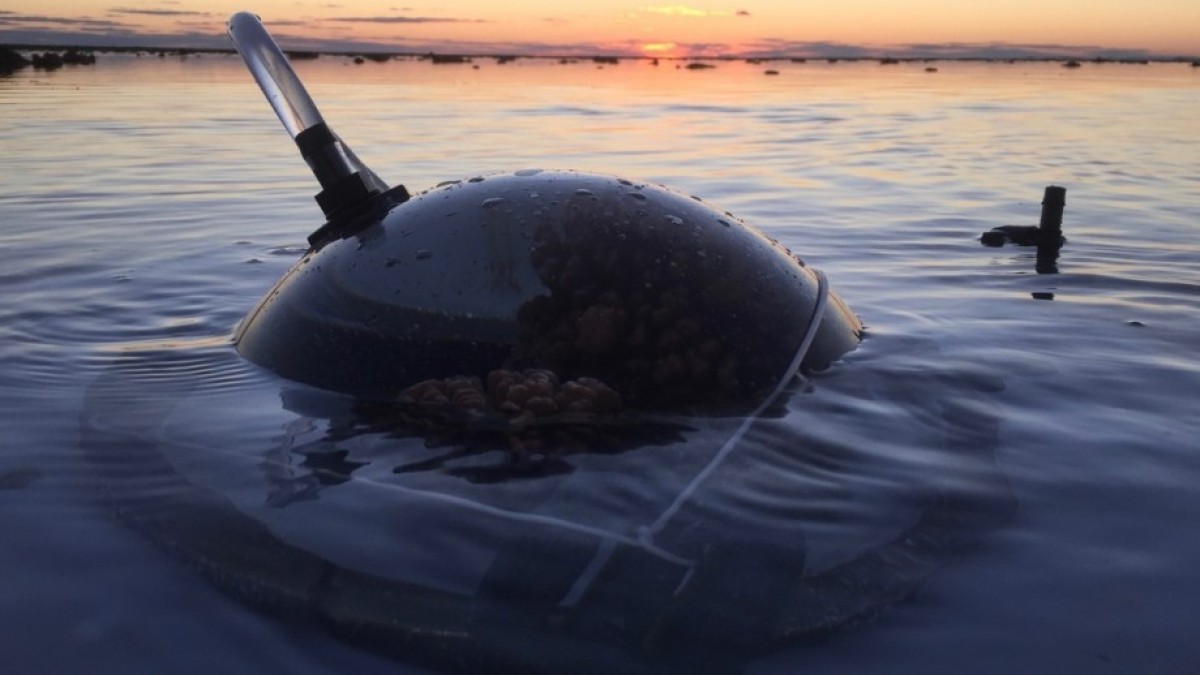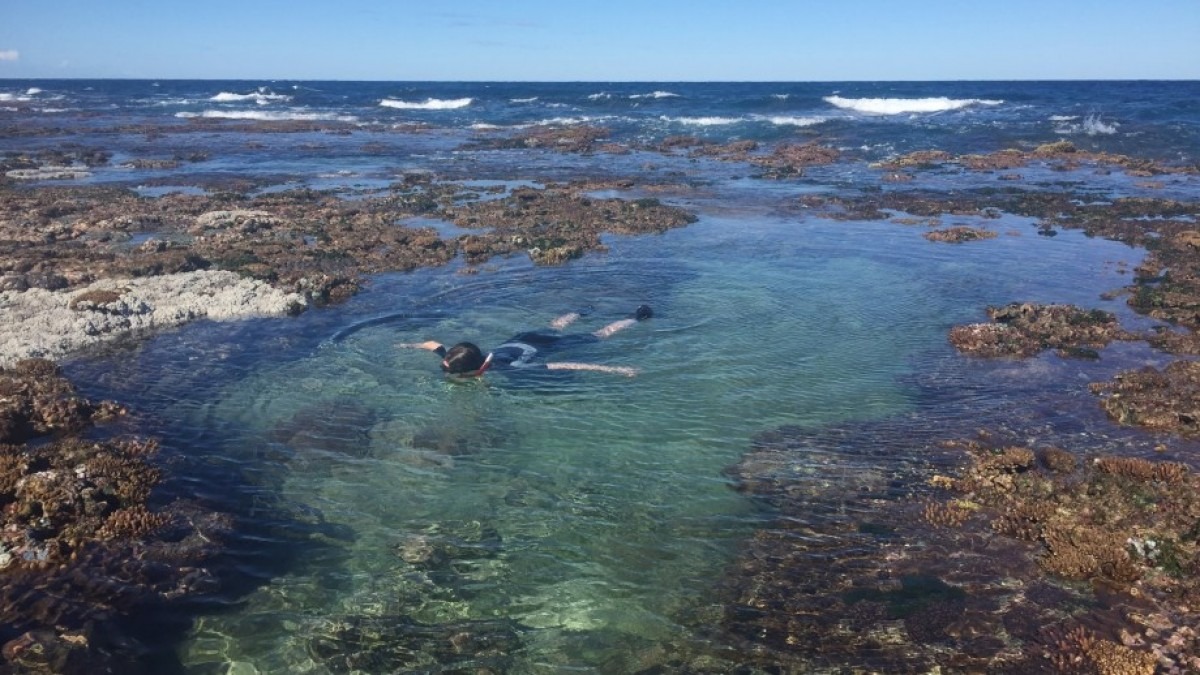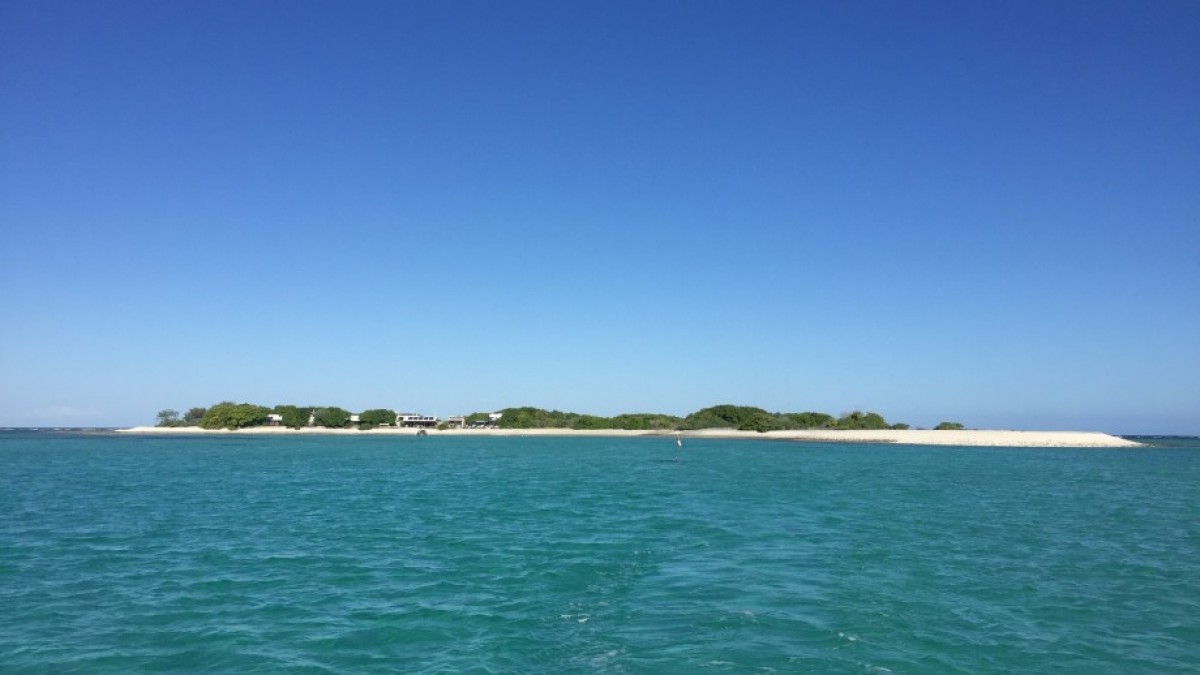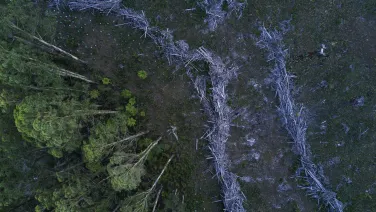The reef is built in a day (but then dissolves at night)
Kate Holland, who just finished her PhD at the ANU Research School of Earth Sciences, takes us on a field trip to the Great Barrier Reef to learn how coral reefs are built and destroyed.
Scientists from the ANU Research School of Earth Sciences are leading an international team undertaking research on the spectacular One Tree Island in the Great Barrier Reef.
Both the island and the surrounding water are designated as a Scientific Research Zone within the Great Barrier Reef Marine Park, meaning it is largely undisturbed from human influences. In addition to this, access to the island can only be achieved at certain tidal heights due to the raised rim of the reef. It was very exciting to cross over the rim of the reef to get to the One Tree - we had just about 50 cm clearance from the bottom of the boat to the corals below.
The research team is using the large natural day/night changes in temperature and CO2 on the reef to understand how ocean acidification and increasing temperature will impact the reef in future.
To understand these processes, we need to first understand how a reef is built. A reef is made up of much more than just corals! Coralline algae is a tiny yet prolific organism which ultimately is responsible for holding the reef together. Both corals and coralline algae make calcium carbonate, which as the name might suggest, requires calcium and carbonate from seawater. In seawater there is a balance between the production and dissolution of calcium carbonate which hinges on how acidic seawater is. There is plenty of calcium in seawater, but the amount of carbonate is very sensitive to the acidity of seawater, which ultimately means that calcium carbonate is also very sensitive to the acidity of seawater. As seawater becomes more acidic calcium carbonate dissolves.
Interestingly, a coral reef experiences a large change in the acidity of the seawater every single day!
We measure the daily changes in the chemistry of the seawater on the reef placing Perspex domes to isolate patches of the reef. In the domes we are able to measure the oxygen, acidity and the amount of carbon in the water. This allows rates of calcification, dissolution, photosynthesis and respiration to be quantified within the domes, revealing the response of corals, coralline algae and other common reef dwellers to changing ocean conditions. Most importantly, we can measure the rates at which both the corals and coralline algae calcify and build the reef, and the rates at which they dissolve as CO2 and temperature vary.
During the daytime, both the coralline algae and the coral are able to build their calcium carbonate structures. At night time, when the pH drops, the coralline algae dissolves.
If CO2 emissions continue and cause further ocean acidification we might approach conditions where both at night and during the day the reef will be dissolving! The coralline algae dissolves more readily than the corals, so depending on the dominance of corals or coralline algae in a reef will dictate how quickly it might dissolve in changing ocean conditions.
Working intensively on a place like One Tree Island makes real how precious and wondrous coral reefs are. We must work together to lower our CO2 emissions, so we can curb ocean acidification and preserve these natural wonders of the world.
If you want to learn about the reef first hand there is an intensive EMSC field course Coral Reefs where you spend several days mapping the reef and learning about carbonate reef ecosystems.








